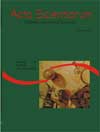<b>The prefix “no”: polysemy and productivity in word formation process</b> - DOI: 10.4025/actascihumansoc.v25i1.2196
Abstract
Derivation and composition are among the most productive processes of our lexicon enrichment. Derivation, on its turn, is divided into prefixal and suffixal. The first one is placed before the base, while the second one is placed after it, modifying the meaning of the derivative word. These processes are the means by which new words are frequently formed and either incorporated to our lexicon or not. This paper aims at discussing how the prefix “no” has been treated within the word formation process, the prefixal derivation, as well as how it is registered in the main dictionaries of Portuguese language, such as: Aurélio, Houaiss, besides its increasing productivity in texts of diverse genres. In order to complete our study, we also searched for the use of a semantic approach, since many people believe that the prefix “no” only brings the base a negative meaning. We intend to show that, in fact, other meanings can be attributed to the prefix “no” and these changes of meanings are due to both the prefixal idea and the base meaning which occurs during the derivation processDownloads
Download data is not yet available.
Published
2008-04-15
How to Cite
Pante, M. R., & Menezes, A. C. (2008). <b>The prefix “no”: polysemy and productivity in word formation process</b> - DOI: 10.4025/actascihumansoc.v25i1.2196. Acta Scientiarum. Human and Social Sciences, 25(1), 51-57. https://doi.org/10.4025/actascihumansoc.v25i1.2196
Issue
Section
Literature and Linguistics
DECLARATION OF ORIGINALITY AND COPYRIGHTS
I Declare that current article is original and has not been submitted for publication, in part or in whole, to any other national or international journal.
The copyrights belong exclusively to the authors. Published content is licensed under Creative Commons Attribution 4.0 (CC BY 4.0) guidelines, which allows sharing (copy and distribution of the material in any medium or format) and adaptation (remix, transform, and build upon the material) for any purpose, even commercially, under the terms of attribution.
Read this link for further information on how to use CC BY 4.0 properly.























